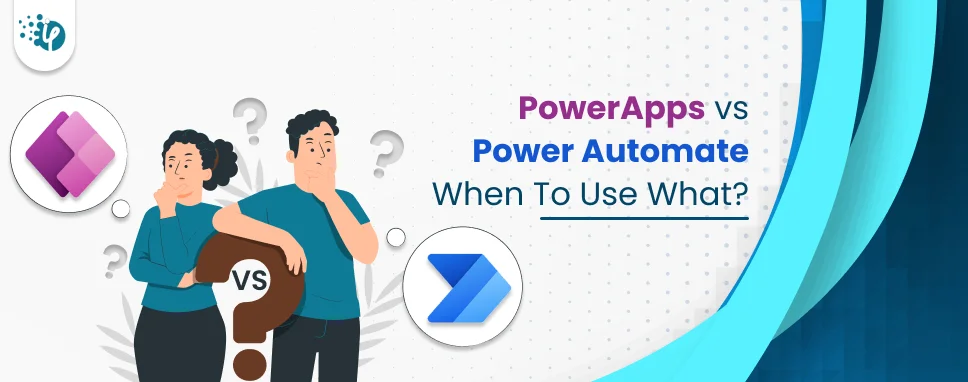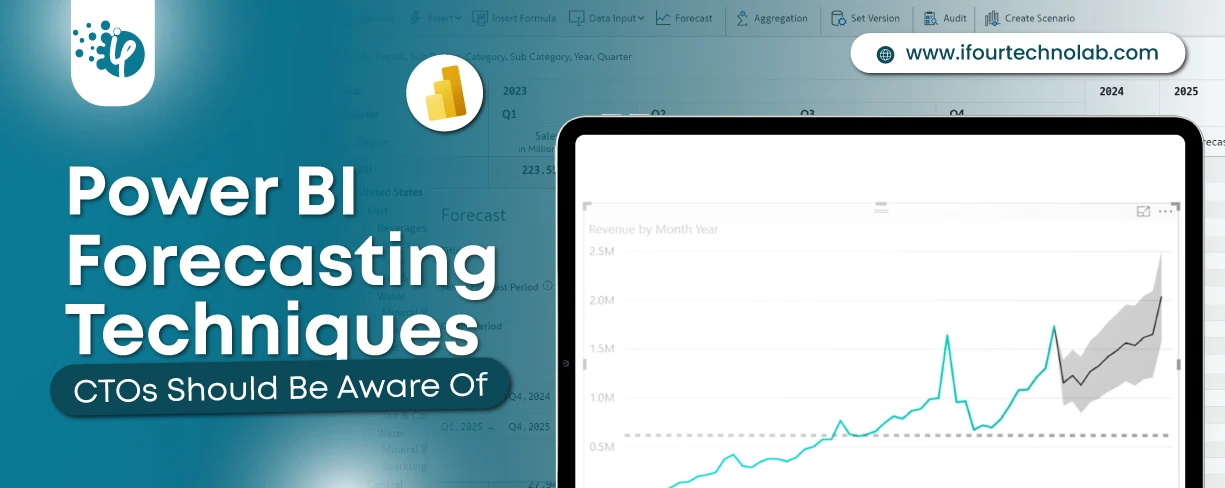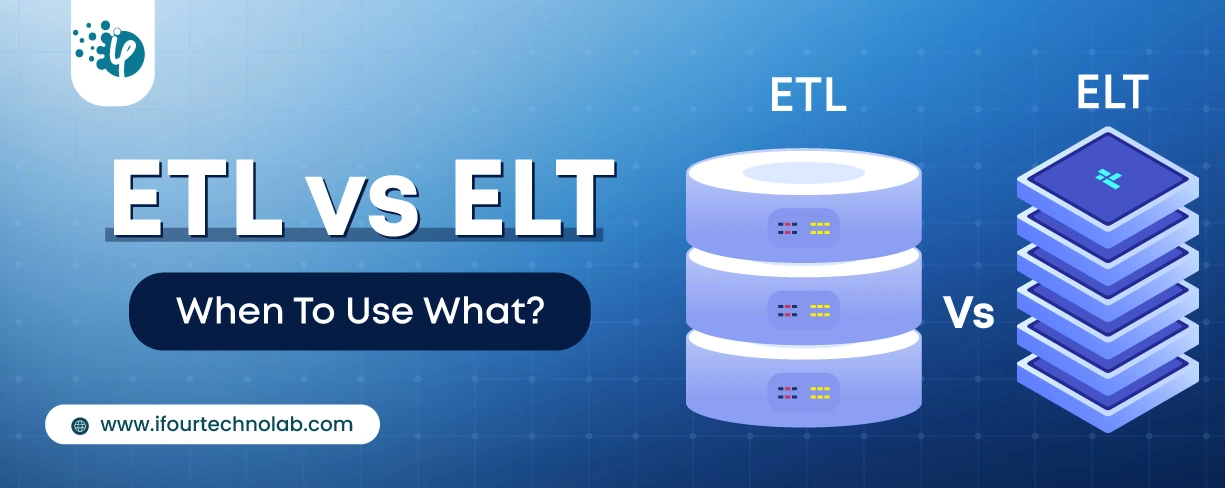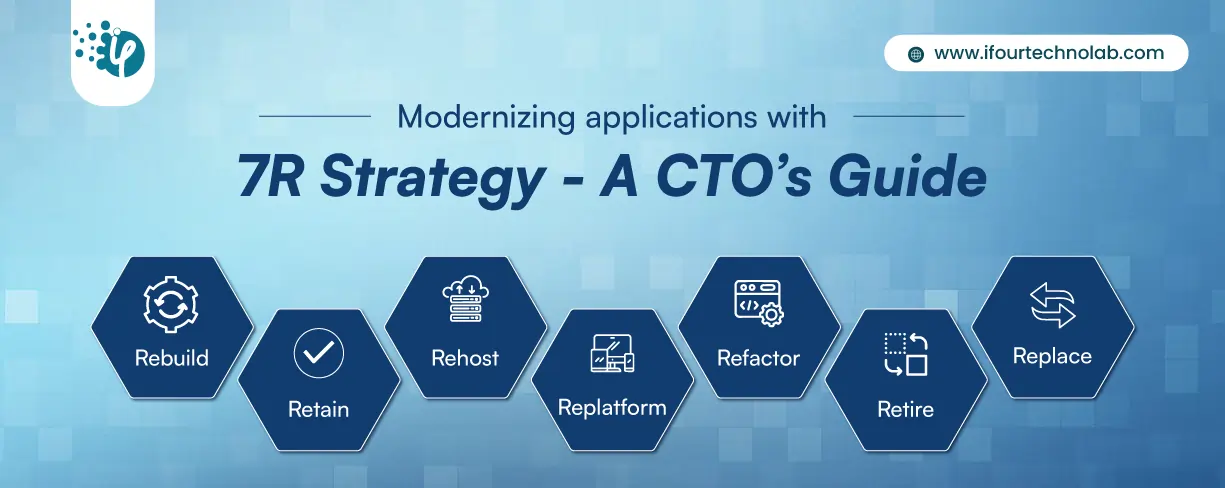How to Do Forecasting in Power BI (Steps & Accuracy Metrics)
Remember our last guide - Power BI forecasting? It revealed things that truly blocks accuracy, both structural and situational. Now it's time to take the next step. Knowing Power...
Listening is fun too.
Straighten your back and cherish with coffee - PLAY !

I often see people asking questions like “Is Power App the same as Power Automate?”. “Are they interchangeable or have their own purpose?”. We first need to clear up this confusion – Power Apps and Power Automate are not the same! Several factors make Power Apps and Power Automate different from each other.
First, they are the essential parts of the tremendous ecosystem called Microsoft Power Platform (a line of business intelligence, app development, and many more) and both these have different working and purpose.
In this blog, we will discuss in detail - Power Automate vs Power Apps, and their usage, so stick around with us till the end.
Power Apps is a product from Microsoft that allows both individuals and organizations to create customized business applications without any coding. It features a drag-and-drop functionality. This will allow users to create visually appealing and professional-looking business applications in no time.
The popular use cases of Power Apps are listed below:
Finance - create applications that will quickly develop budgets, reports, etc. for your described data.
Sales & Marketing - easily connect systems with the applications to get instant notifications regarding products, sales, etc.
HR Management – creation of apps that will allow employees to stay connected, keep track of their data, and many more.
Do you know? the applications created using MS Power Apps will have the ability to connect them with numerous data sources. The sources can be within the Microsoft Ecosystem or external sources such as cloud storage.
Additionally, the apps created in Power Apps will be fully responsive just like the ones that are created through proper coding.
The good thing is that the Power Apps is available in both free and paid versions. The paid version costs around $20/month. At last, it's important to stay in touch with reliable Microsoft Power Apps consulting services to leverage the best benefits.
Now here is the twist. What if someone asks you - What are the three types of Power Apps?
Here some people wonder if Power Apps do have different types. Well, guess what? They do! Power Apps are of three types:
Each one has its own purpose for use in the business.
So, now you have a thorough idea of what exactly Power Apps is. It is time to get a short overview of Power Automate.
Power Automate is also a product by Microsoft through which automatic workflows can be created.
In simple words, Power Automate eliminates the need for individuals to shift from one application to another to perform specific tasks. Instead, it will automate numerous routine tasks on its own without compromising on accuracy as well as efficiency.
Some people get puzzled when they are asked – “what is the difference between Power Automate and Power Flow?” The answer to this is simple. Microsoft Flow and Microsoft Power Automate are the same product. Microsoft Automate has some advanced features such as AI builder, and RPA (Robotic Process Automation) making it an updated version of Microsoft Flow.
Some of the most notable use cases of Power Automate are:
There is a pricing similarity between Power Apps vs Power Automate as both are available in free and paid versions. The premium version includes multiple plans – Power Apps is available at $20/month (per user) and the second one, Power Automate is available at $15/month
To put it simply, we use MS Power apps for creating user-friendly applications (no matter what domain it is) while Power Automate is used for making our jobs more efficient.
Microsoft Power Apps lets you create custom mobile applications without needing extensive coding knowledge.
Power Automate helps to automate tedious and repetitive workflows, saving time and effort. For example,
With Power Apps, you can make custom-built apps precise to your specific business needs, such as data entry forms, interactive dashboards, or mobile apps, all with a user-friendly interface.
When deciding between Power Apps and Power Automate, you first understand the purpose of each tool. MS Power Apps, a leading low-code application development platform is ideal for creating custom apps without coding. It is perfect for tasks like building interactive dashboards or data entry forms.
On the flip side, Power Automate, previously known as Power Flow excels at automating repetitive tasks and workflows. This includes sending automatic notifications or syncing data between apps.
So, to decide on Power Apps vs Power Automate - when to choose what, first consider whether you need to build an app from scratch or automate existing processes.
Below are some of the key differences between Power Apps and Power Automate.
The purpose of Power Apps is to assist both individuals and professionals in the creation of customized business applications without writing diverse code.
For instance, an e-commerce store owner can use Power Apps to build an inventory management app quickly and efficiently. The app will allow the employees to get real-time data for inventory as well as quick scanning of product bar codes.
On the other hand, the main purpose of Power Automate is to automate routine workflows by utilizing advanced Artificial Intelligence algorithms.
For example, business organizations can automate the image to text extraction process using Power Automate. To do so, Power Automate makes use of both AI and Optical Character Recognition algorithms to first understand the text that the picture contains and then extract the text with 100% accuracy.
You may find interface variations between Power Apps and Power Automate. MS Power Apps features a drag-and-drop interface for the creation of business elements. This means that even individuals with average knowledge of online toolkits can use it to build fully professional and responsive business applications.
When it comes to Power Automate, features a special flow designer to build workflows to automatically perform routine tasks quickly and efficiently.
Users can easily access Power Apps through mobile phones, desktop PCs, tablets, etc. anytime, from anywhere. All you are required to have is a stable internet connection. Moreover, it can be easily integrated with many Microsoft services and products.
On the contrary, currently, Power Automate is accessible through PCs or laptops. This is because it requires diverse editing which is only possible through computers. Besides this, it also supports integration with numerous Microsoft products and services.
Power Apps is included in the Office 365 suite, making it a genuine addition for businesses already using Office 365 tools. Hence Power App is your way to go if you wish to leverage Office 365 products.
On the other hand, Power Automate comes under the Azure cloud platform, making it an ideal choice for businesses looking to leverage Azure’s cloud capabilities. So, Power Automate can be a great option if you want a platform integrated into Azure.
Power Apps comprises more flexibility as you can access it with any device with a web browser. Moreover, it supports integration with other Microsoft products and can be used on multiple platforms like Power BI, SharePoint, and Dynamic 365.
However, Power Automate is limited to desktop devices only where you will get limited integration options. As it only supports workflow integration with SharePoint.
Here Power Apps is a clear winner as it provides a more suitable option for individuals who need a flexible and comprehensive app development tool.
Microsoft Power Apps comprises some great capabilities to build document-centric apps where you can integrate functionalities for editing and managing documents directly under the app’s interface. Apart from this, Power Apps even allows you to craft custom document entries and edit document forms where you can build a user-centric interface by adding precise fields and controls that satisfy your document management tasks.
Power Automate even offers document-centric workflow. Here you can build a workflow for the approval of documents reviewing procedures. Meaning that it allows automating workflow that drives events within the document such as editing, feedback tracking, sending notifications, etc. Moreover, by using Power Automate, you will be able to connect multiple document repositories like SharePoint, cloud storage, OneDrive, and more.
A key distinction between Power Apps and Power Automate relies on respective procedures of editing and modification. With Power Apps, you can effortlessly update your apps within the Power Apps environment. Any modification you make will take immediate effect, allowing you to keep your apps up-to-date and functioning smoothly.
Talking about Power Automate, it consists of an interface called Flow that allows individuals to create automated workflows between apps and services. It’s a powerful tool yet it doesn’t offer immediate updates and changes. For sure it adds an extra step for modification purposes however it also facilitates flexibility for users to create more complex and customized workflow.
Power Apps works closely with other Microsoft products, ensuring that apps are linked with products such as MS Dynamics 365 and SharePoint.
Power Automate operates on its own and enables task automation on various platforms without needing to be integrated with other Microsoft services. Power Automate’s ability to work independently makes it a versatile choice for people who prefer not to depend heavily on the Microsoft Ecosystem.
So, these are the core differences between Power Apps and Power Automate that one should be aware of. I hope you find this blog informative and helps you find a suitable solution for your business.
Looking for the perfect Power Automate consulting services? Look no further than iFour! We have skilled experts to assist you with all your needs.
After understanding Power Apps and Power Automate, in this blog, we can see both are crucial parts of Microsoft’s Power platform. Both of them are unique and offer their own set of benefits for businesses. MS Power Apps is specifically designed for creating customized low-code applications, whereas Power Automate is used for automating workflows. These are the fundamental distinctions to be aware of, but there are several important differences between Power Automate and Power Apps that one should consider when choosing the right one.
In this article, we have explored those differences in detail. I hope this will help you find a suitable solution for your business. Partner with iFour to build your low-code application with modern advancements.
A common relationship between Power Apps and Power Automate is that both are Microsoft products tagged under Power Platform and work to create custom apps and automate workflows.
There are multiple differences in Power Apps vs Power Automate and Power BI, however, the major difference is that Power Apps is used to create custom apps and is more flexible compared to Power Automate. While Power Automate is used for Process Automation and Power BI is utilized for data visualization and analysis.
It can be tricky to answer this question as each platform comprises its own significance, although we can find some alternatives of Power Apps which are Outsystems, Salesforce platform, and APEX. However, MS Power Apps could be a better option for users who are already familiar with Microsoft products.
We can find multiple examples of Power Apps such as it is used in the healthcare industry for patient management systems and attendance management systems. Moreover, it can be also used to build food processing automation apps, project management apps, etc. Overall, Power Apps beings helpful for individuals and organizations to create custom apps that satisfy their specific requirements.
The core example of Power Automate is that when clients integrate automation, they get alerts for emails when they receive emails from a specific sender. It also creates automation for data entries, data collection, customer service, etc. Basically, Power Automate is used in organizations to create and automate workflows.
There are multiple benefits of using Power Apps such as it enables programmers to leverage AI capabilities, robust security practices, smooth integration across platforms, and reduced cost of development.
The core benefit of using Power Automate is that it streamlines everyday tasks across the business system. Moreover, it automates workflows so users can free up their time doing manual jobs and pay attention to more important prospects. And at last, it benefits users to leverage great integration capabilities across and outside of the MS environment.

Remember our last guide - Power BI forecasting? It revealed things that truly blocks accuracy, both structural and situational. Now it's time to take the next step. Knowing Power...

It's amazing to see how Data teams today are racing ahead - moving from traditional warehouses to cloud-native platforms, lakehouses, and real-time architectures. But in this rush,...

Think about the last time CTOs spent most of their time fixing old systems. Updates were slow, servers were expensive, and adding new features took time. Now, things have changed....